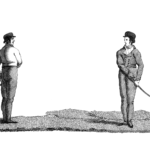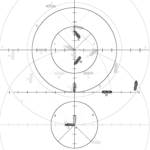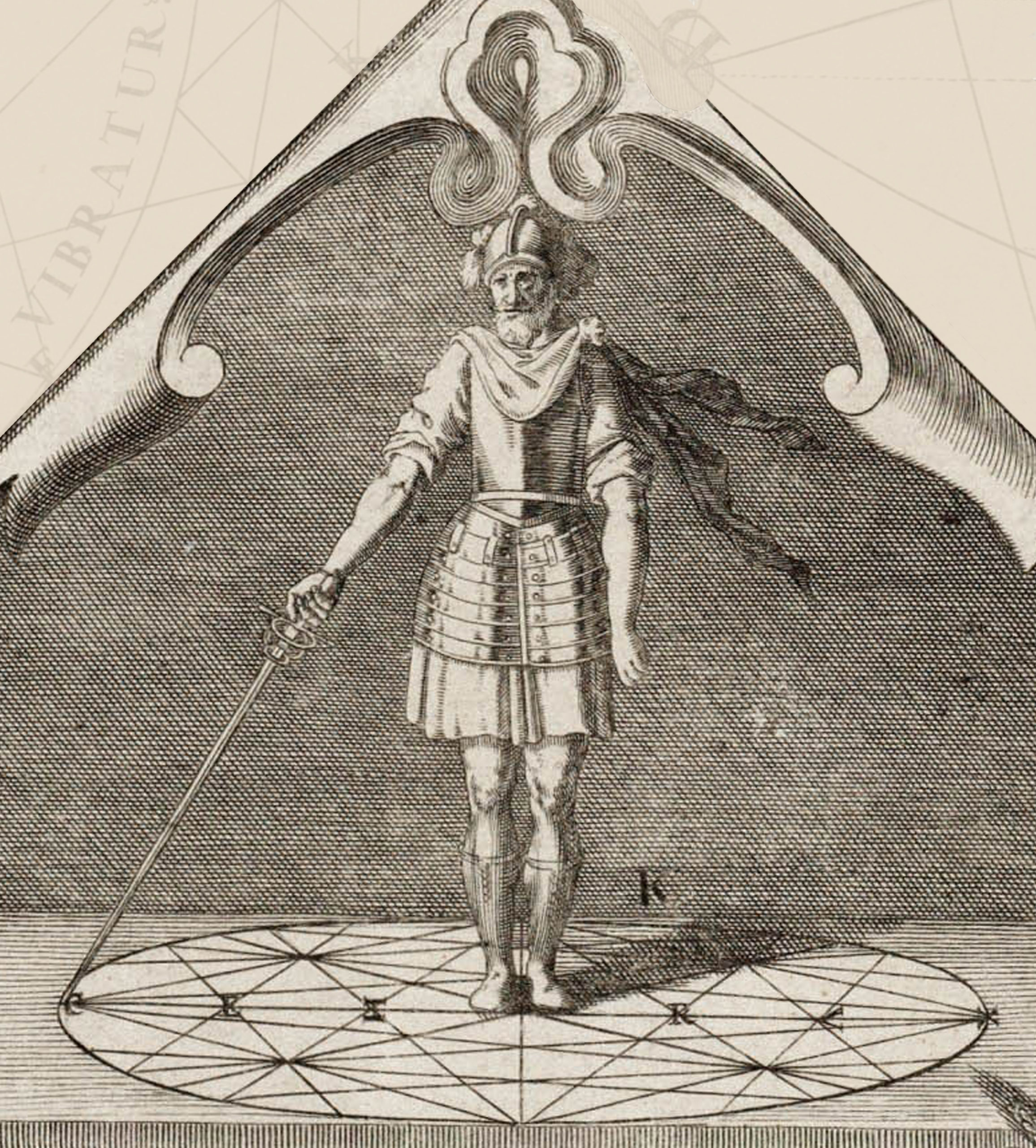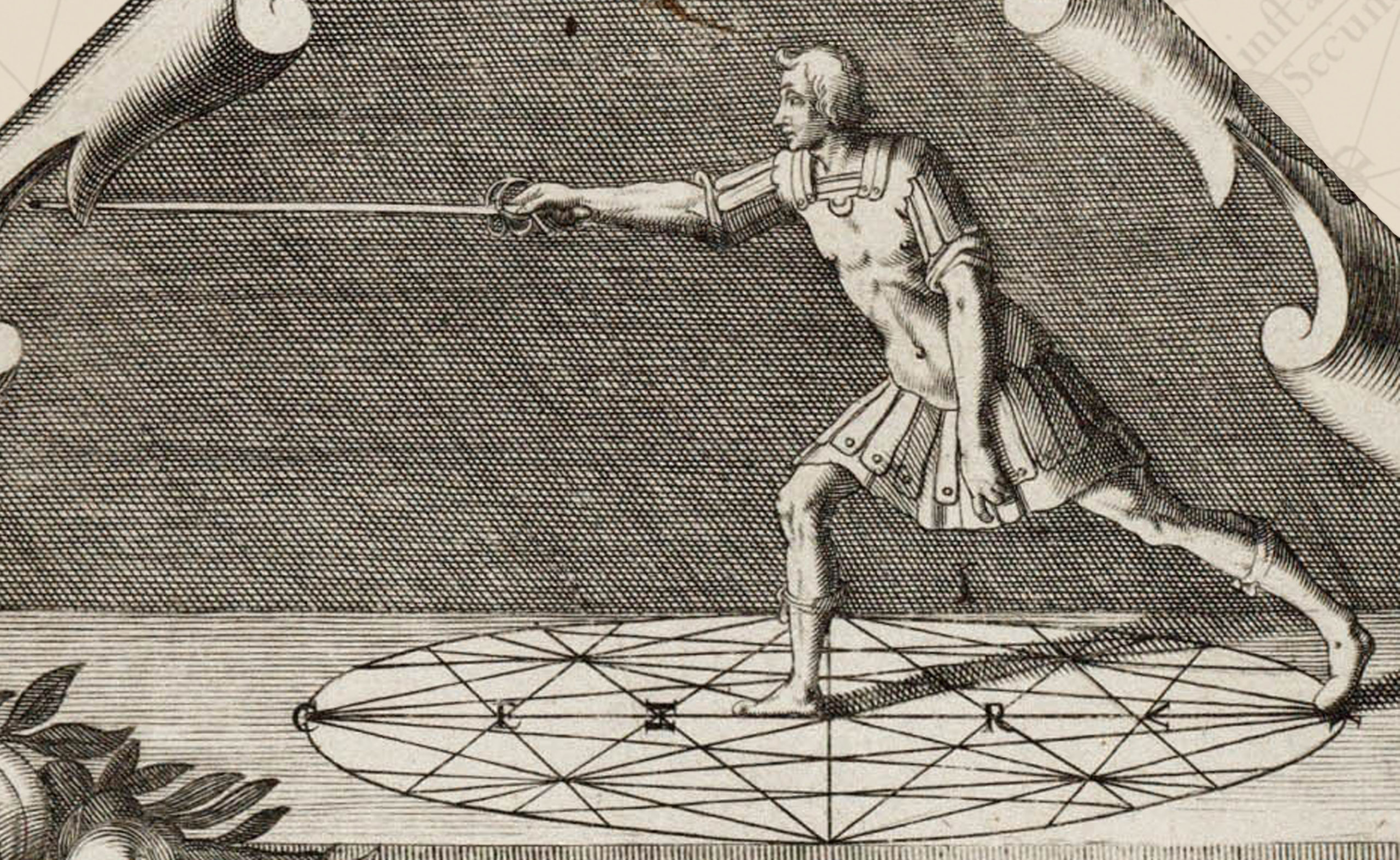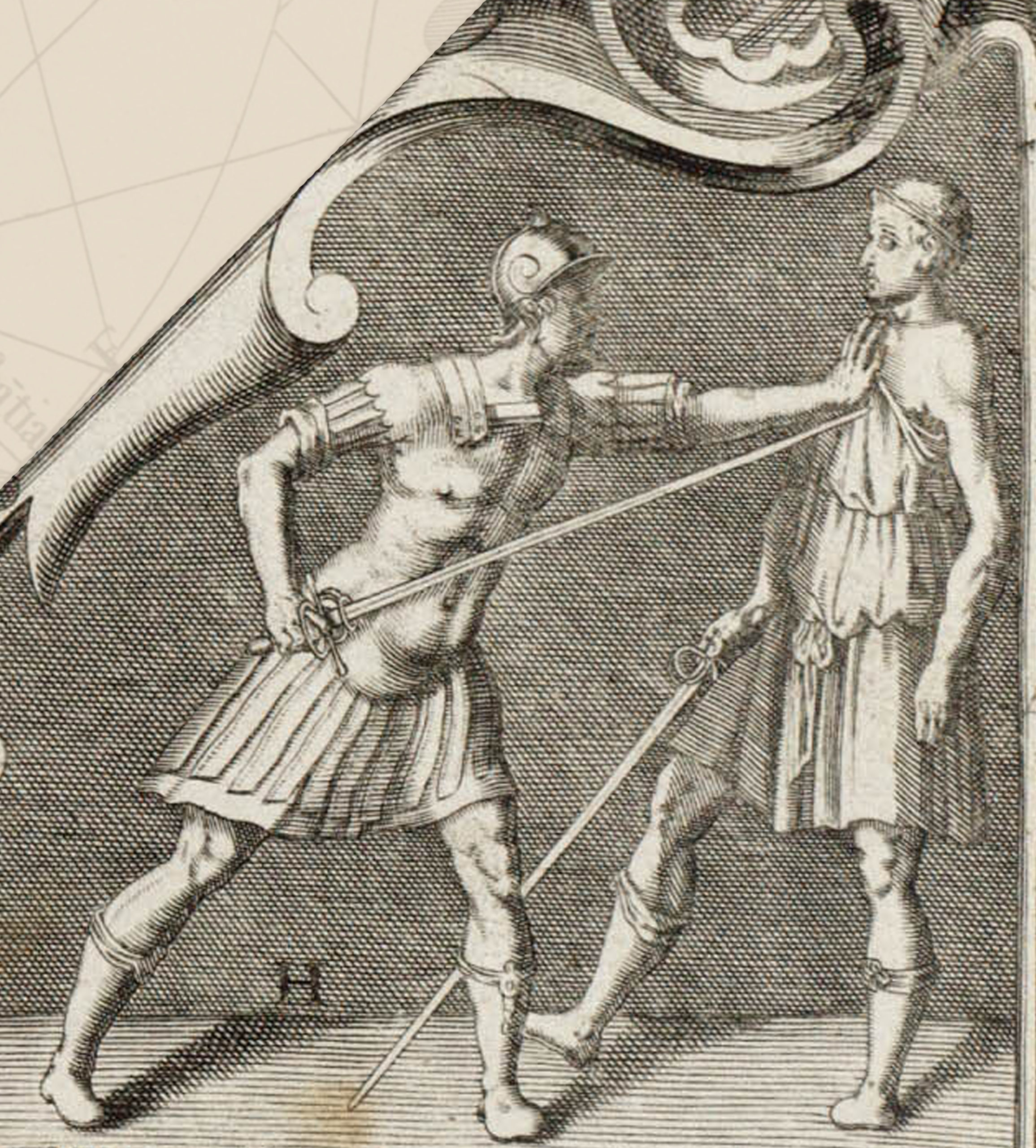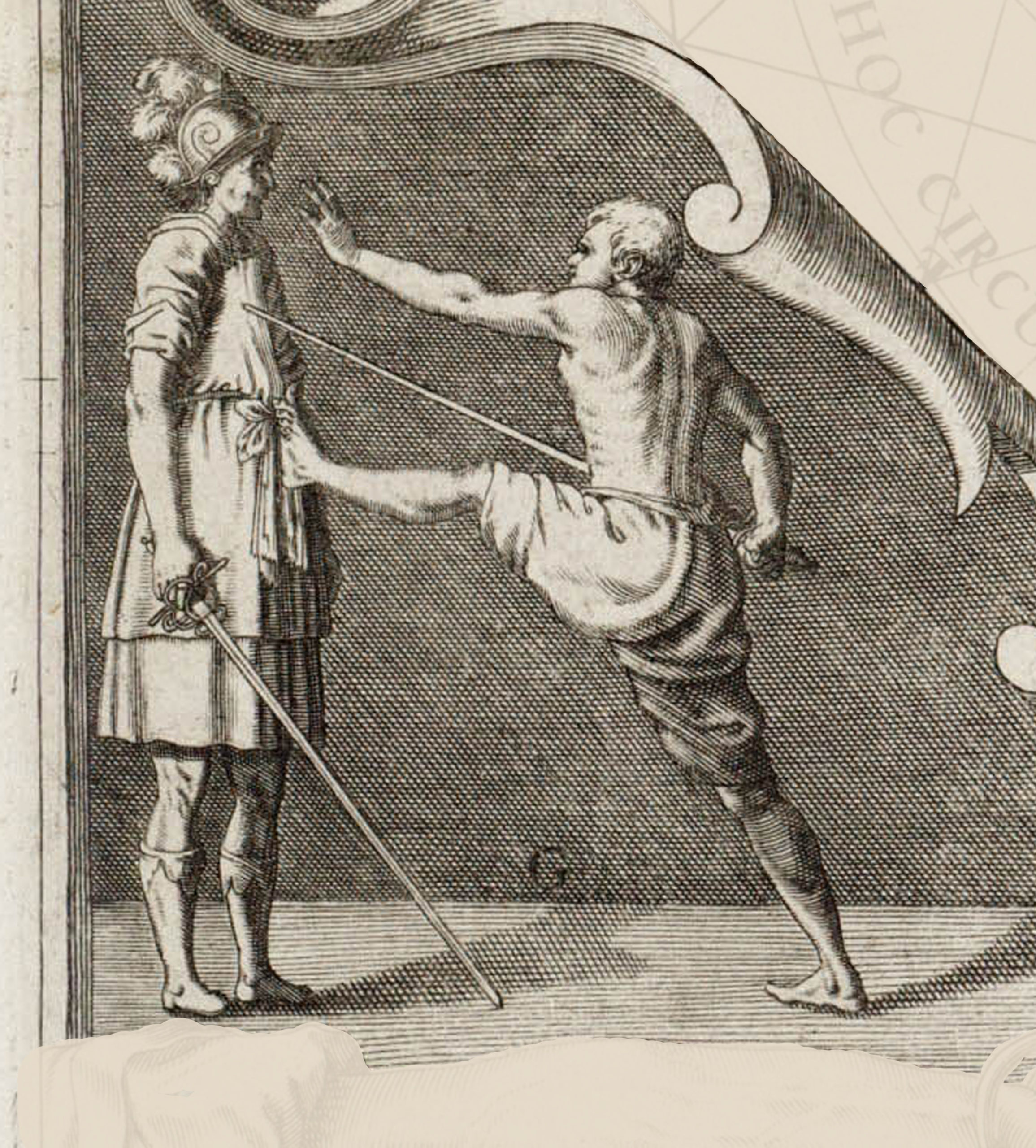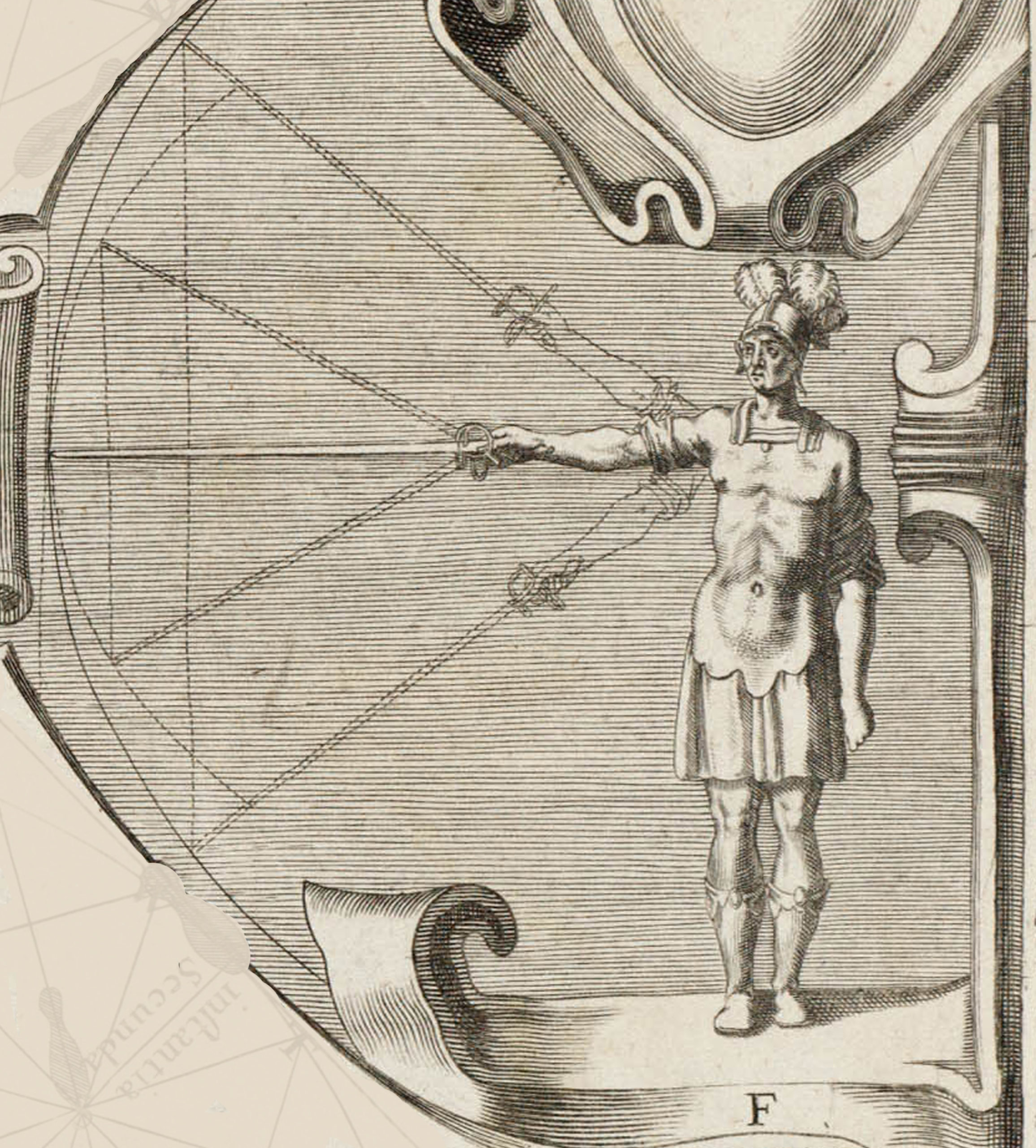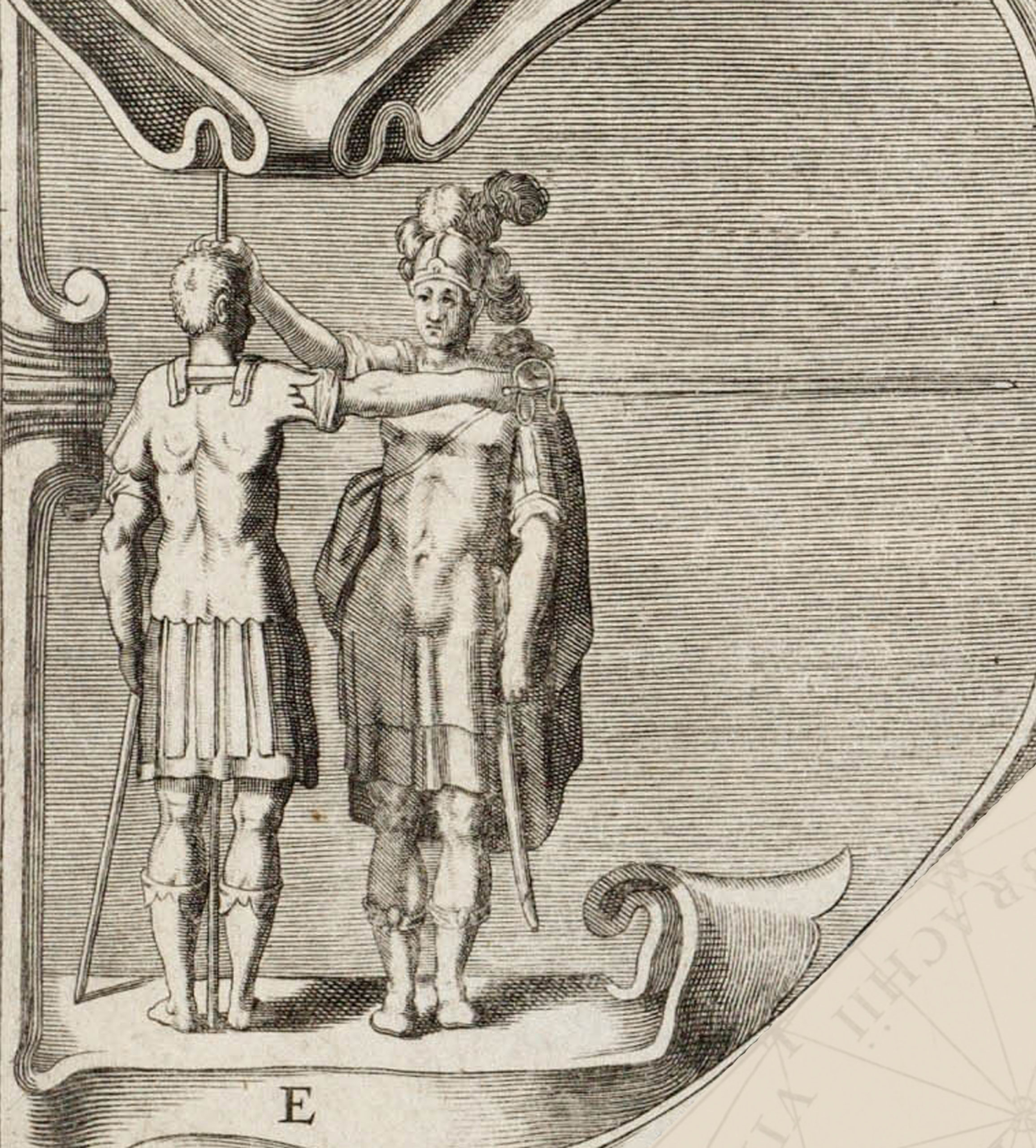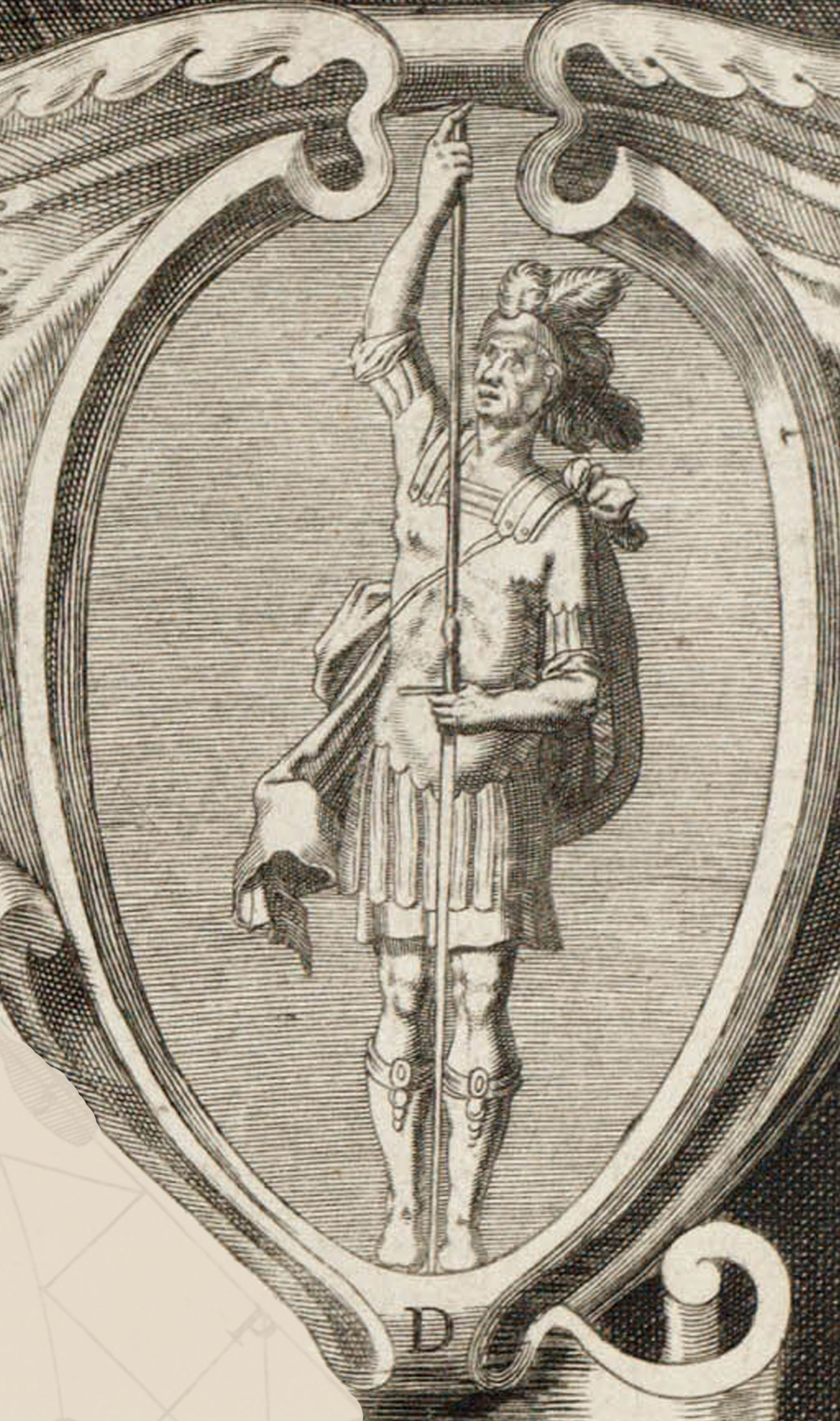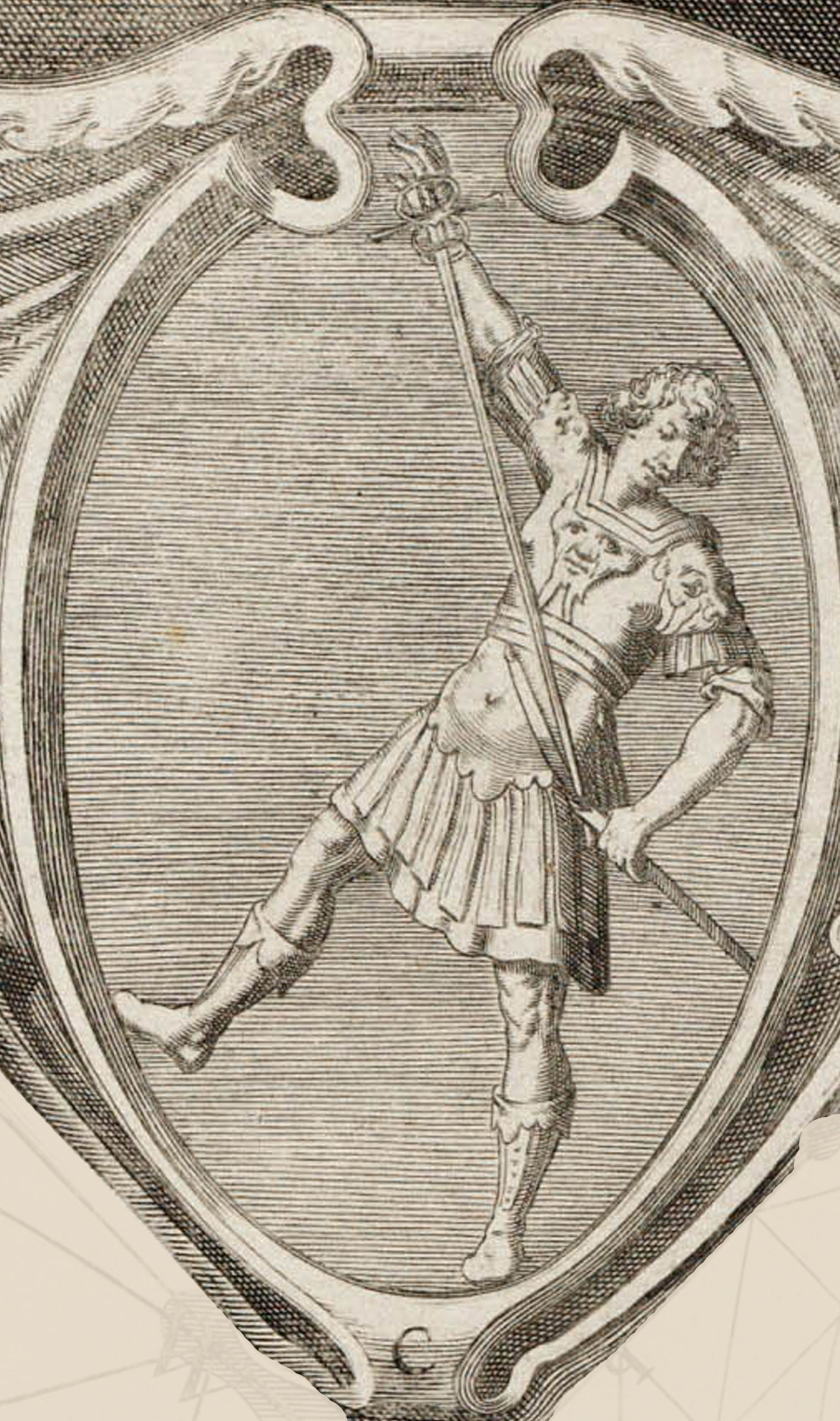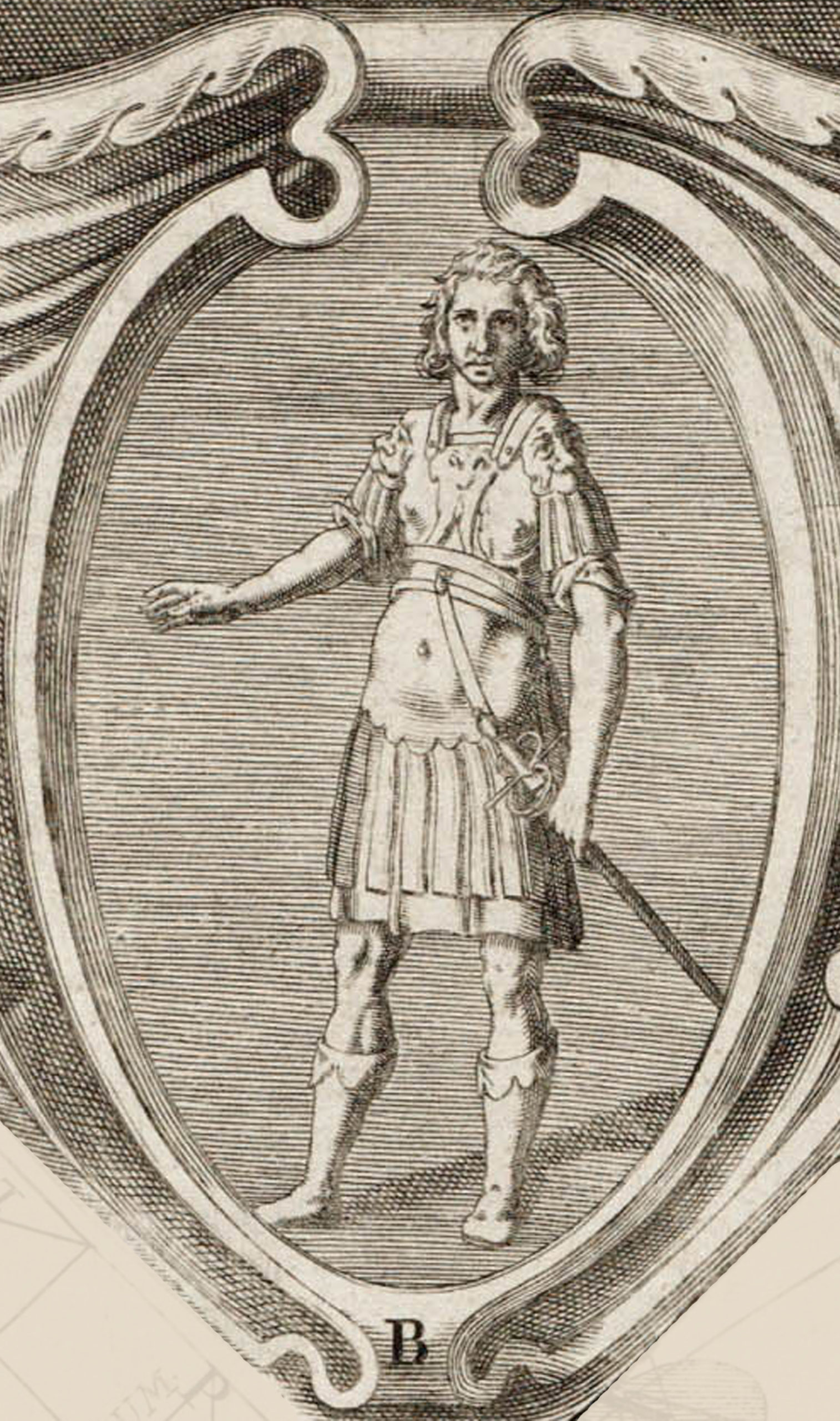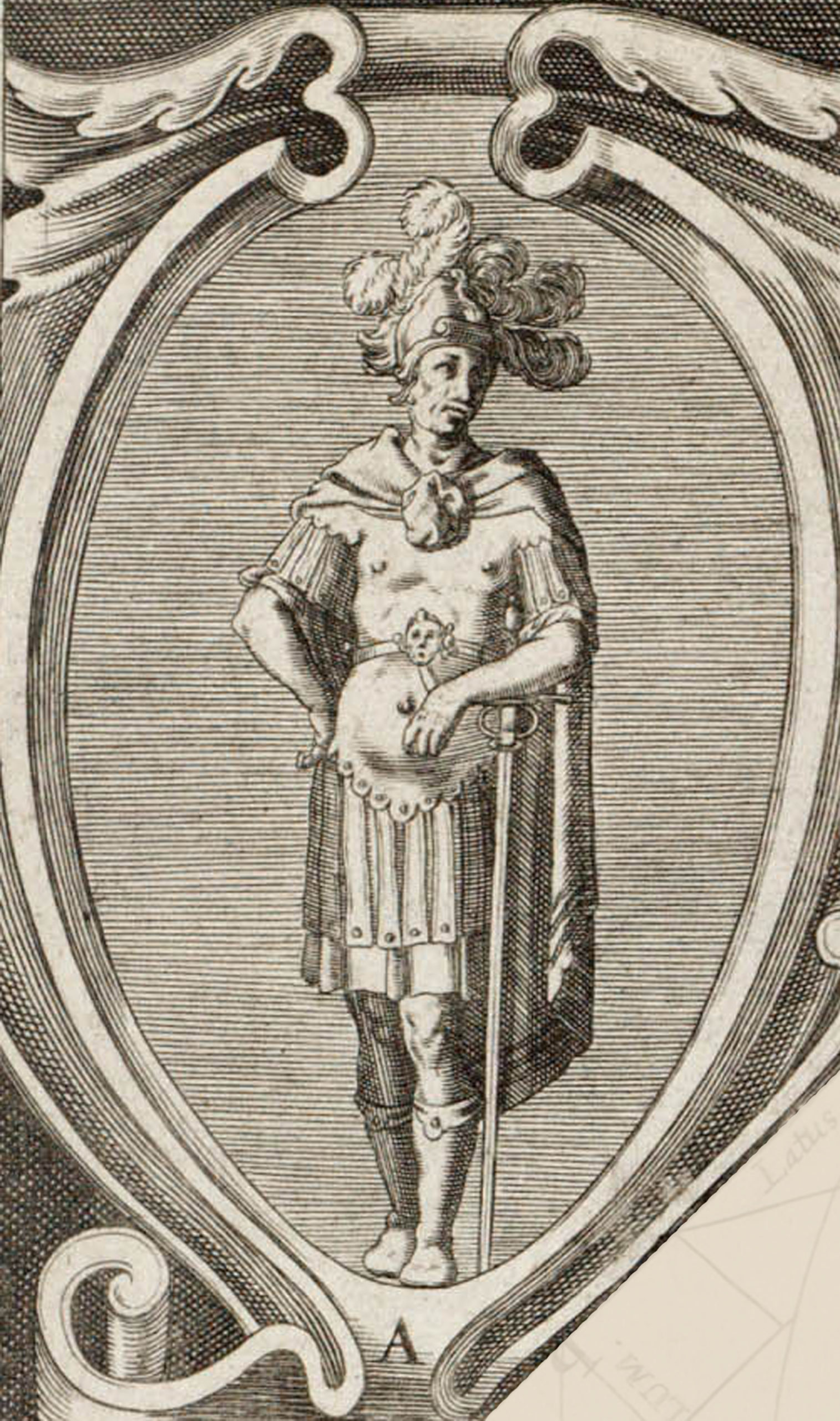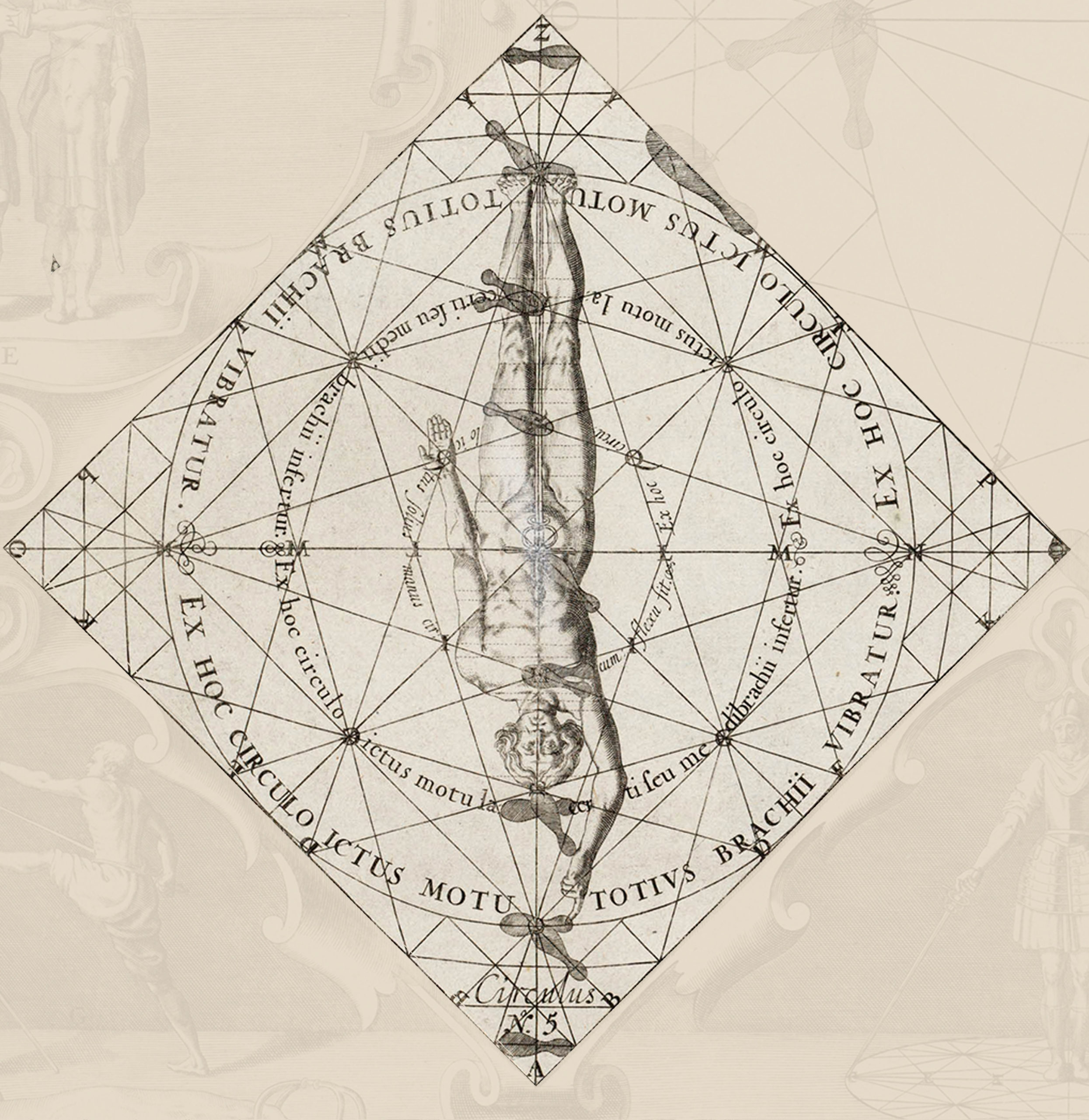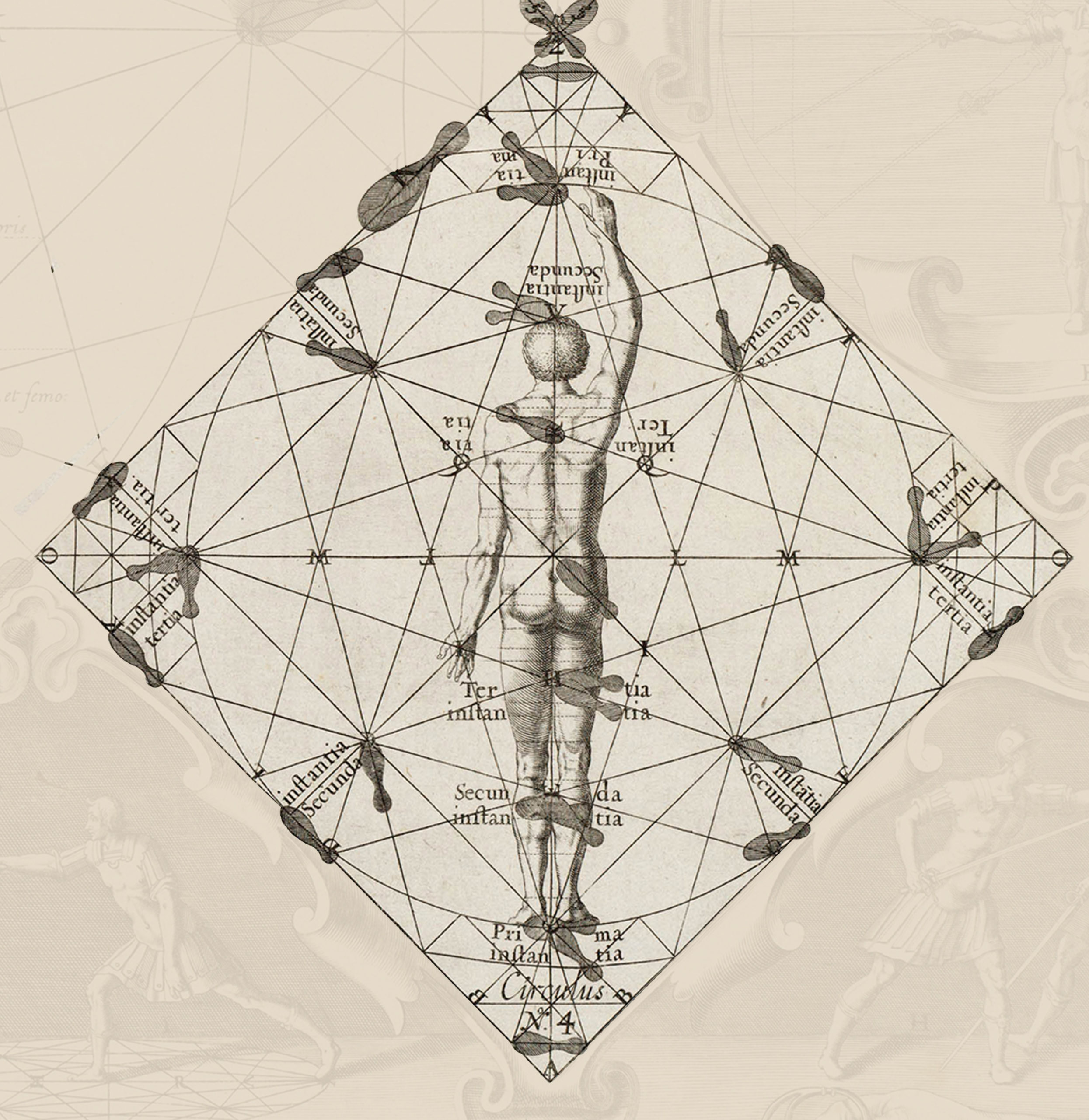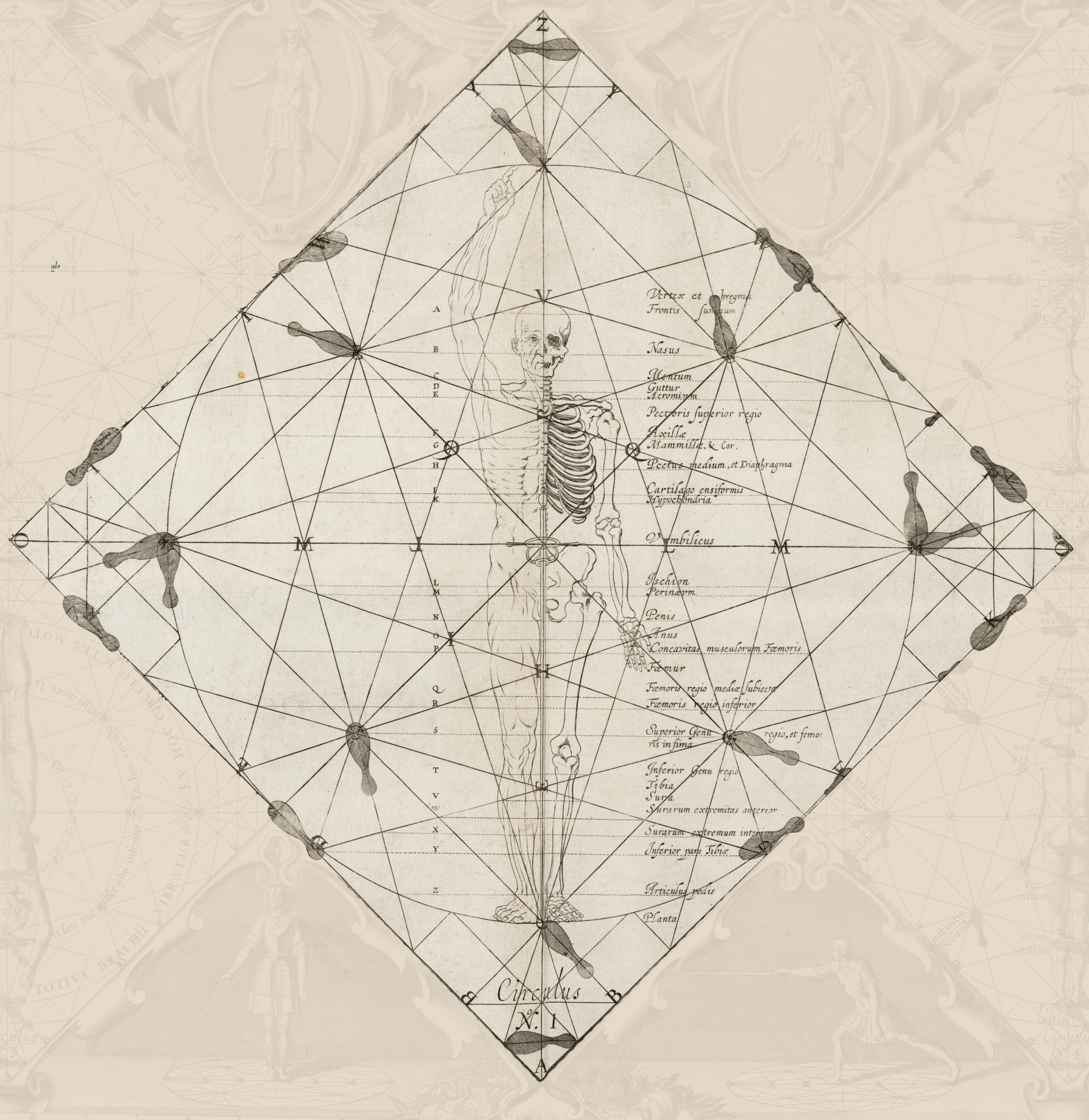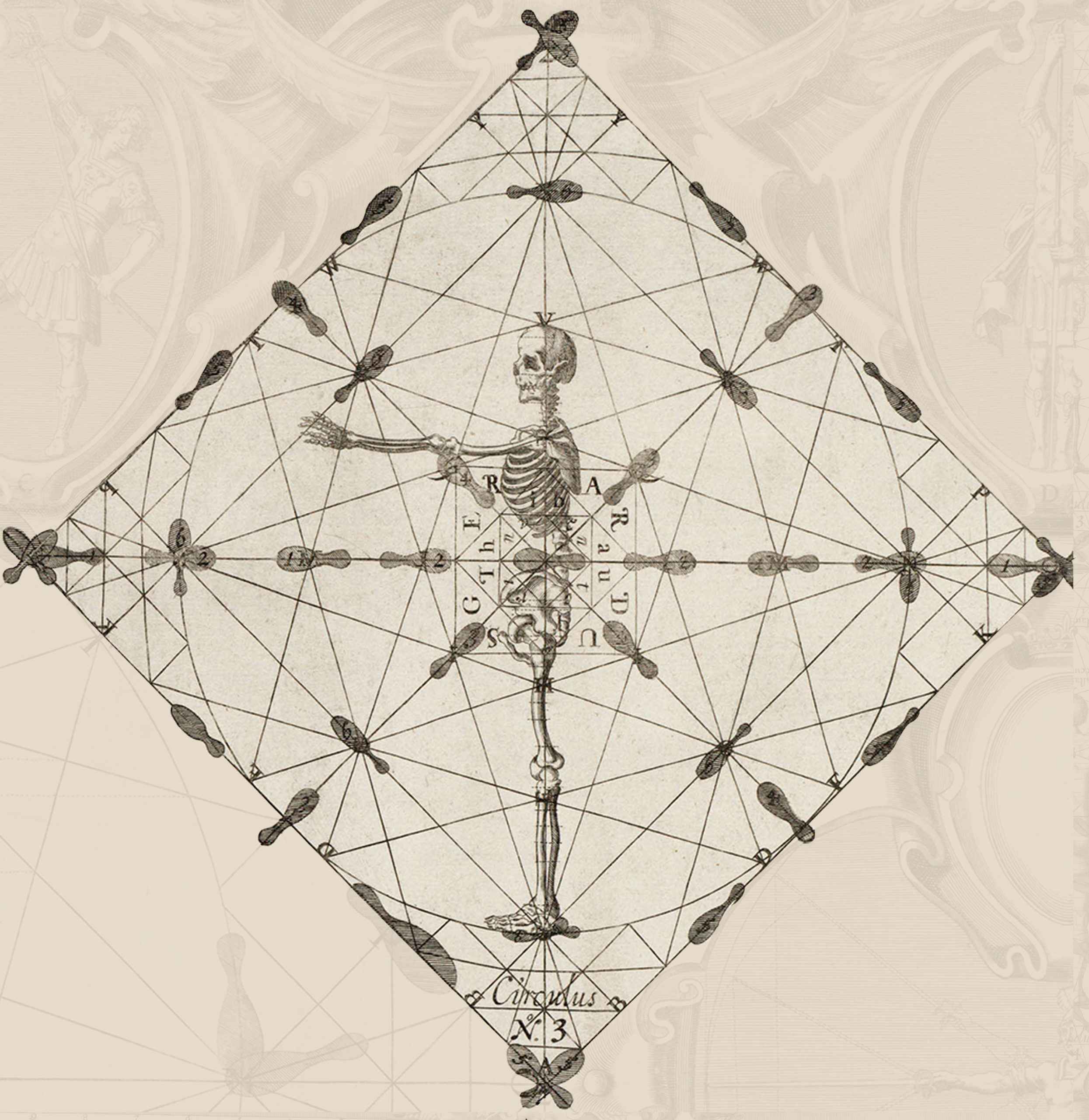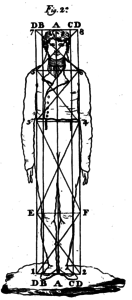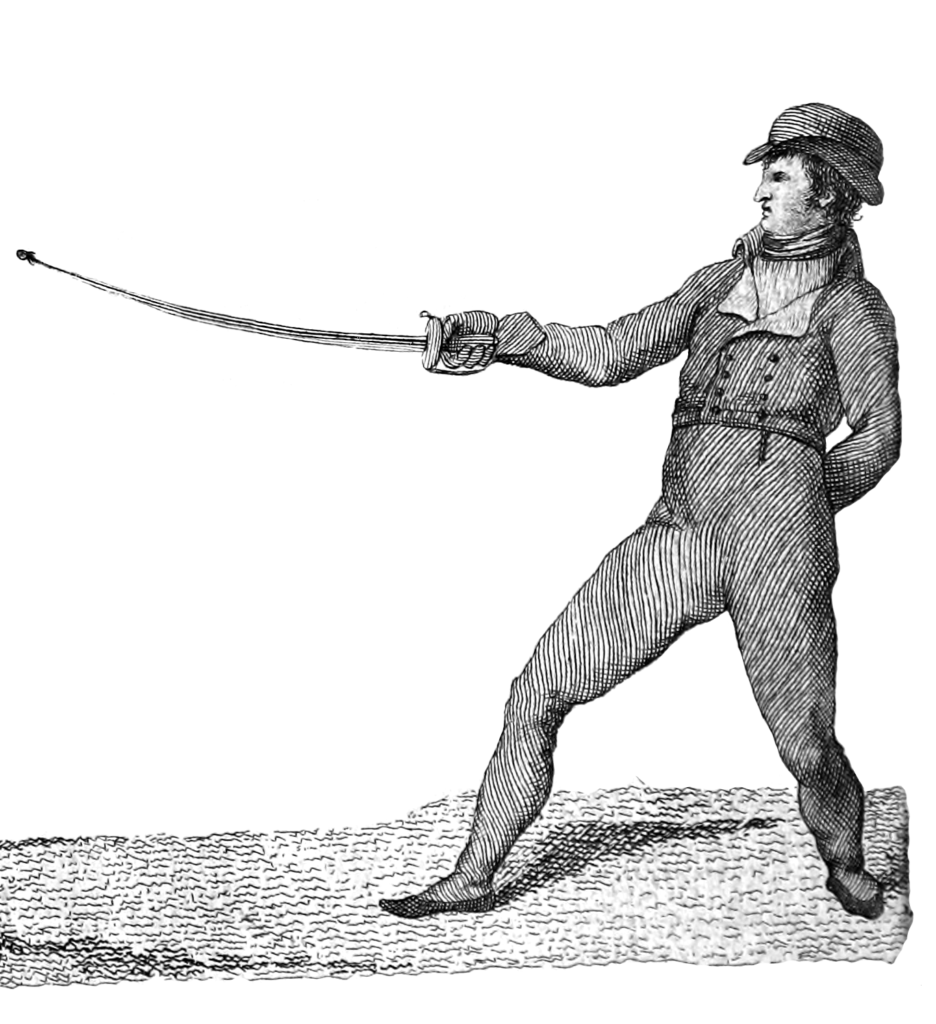303. The word conclusion was adopted to express an operation by which, disarming the enemy, the fight is necessarily completed. You can make the conclusion in the first, second, third, or any other shot because, if it is dependent on offensive and defensive rules, there is no reason for it to have a place in certain shots or removals, but it must be practicable in each and every one of those included in the skill. Therefore, any offense and any defense may end in conclusion. But, as each thing calls for its opportunity, it would be reckless to try it at every moment, since at some times the enemy will be very agile in their offenses and at others the planned movements will be clumsy. Therefore, prudence and the rules that I will opportunely give will preface the occasion to achieve this advantageous action.
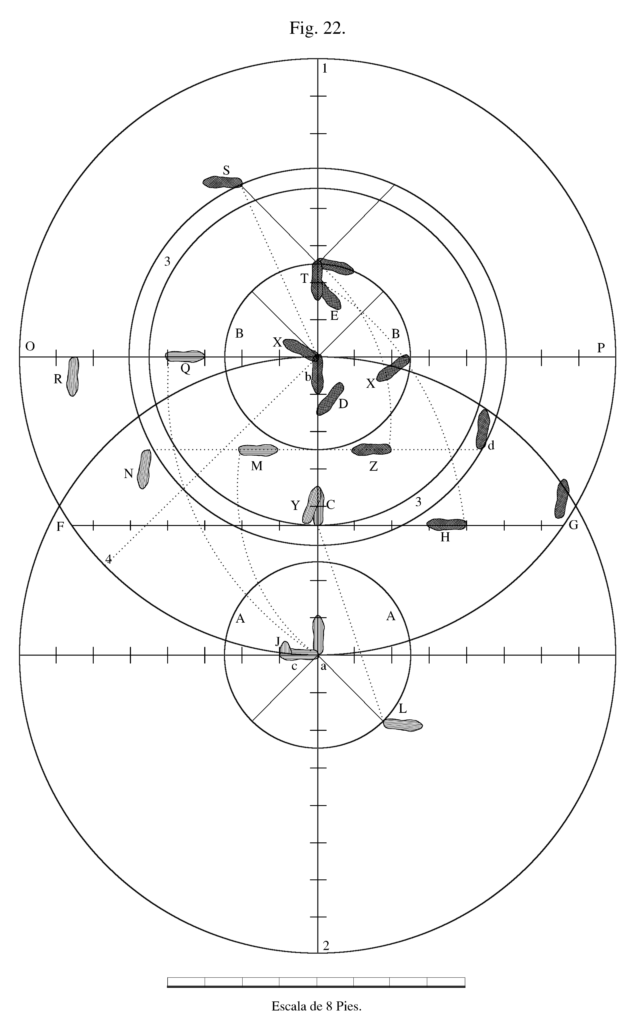
Conclusion on the Removal of Low Fourth
304. To put with clarity this operation that is certainly one of the most complicated, I will help my reader with a demonstration of the necessary compasses. To that end, I will reproduce here the circles and lines of the inferior plane, explained already in the first part of this treatise, adorning them with the figures leading to this object alone. It is therefore necessary to have plate 12 on hand to understand what will be said next.
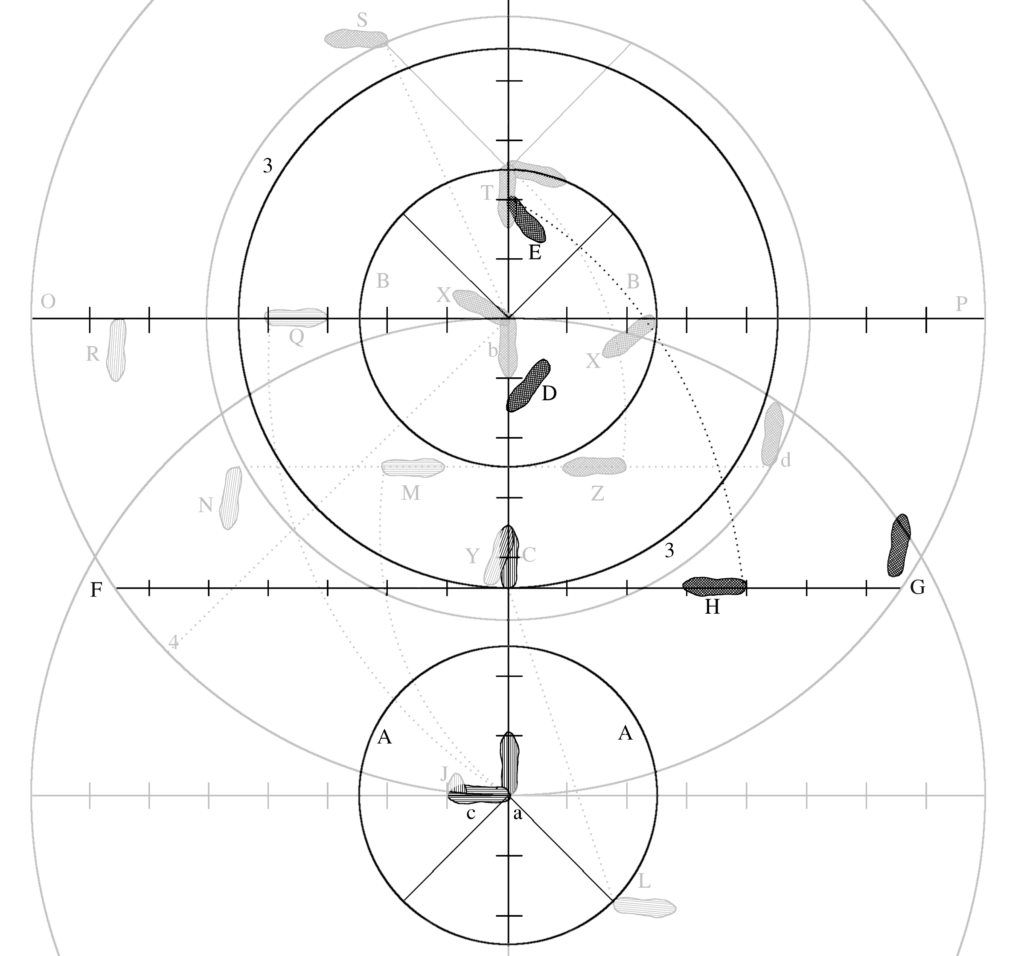
305. Suppose that the enemy has fixed at point a, at the center of their own circle, designated with A-A, and has stepped deeply with a thrust of fourth. Consequently, leaving their left foot firm at the points a-c, placing the right at point C of the outer circle 3-3-3-3 which is provided for such wounds. In virtue of this, make a removal of low fourth to the thrust, for which it is necessary to consider that it is to advance to the chosen near distance, or of conclusions, going out of the points b and V in which you waited, to E and D, moving square as demonstrated by the steps, in this removal, the contrary sabre must be held down, a little more than is ordinary, to be able to easily make the left hand pass over the two weapons and secure the low outside of the contrary guard. At this moment, lifting up, without dispensing with the subjection, make your left foot pass very rapidly from point E which it occupied, to point H of the enemy’s tangent (marked with the letters F and G) and the right to point G, being balanced forward on the right leg. In this situation, if the contrary does not yield the weapon, present your point to the root of their arm, below, without separating from what must be two at the end of this operation outside of the right vertical. The respect which that infuses an offense seen so closely, is the best corrective for incivility or arrogance.
306. I would be remiss to candor and make a grave insult to the skill if I left a part as essential as the present undefended, So, to each conclusion, not only will I put its opposition, but the way to transfer it, that is to say, to conclude the one who tries it, taking advantage of the opportunities which the skill provides.
Opposition to the Conclusion
307. To oppose the conclusion, it is necessary that, in the same time as the contrary advances on their removal to the points E and D, they graduate the sabre by picking up their arm until the elbow is joined to the right vertical, going out with a Spanish leap back in one time so that both operations have no distinction in their ending and perfect the removal of fourth. If, instead of the Spanish leap back, he brings his right foot onto the diagonal of his side L, by virtue of graduation, if the contrary continues his journey up to the tangent, inflict a thrust with the sabre by only balancing, without forgetting the doctrine of oppositions explained in the first part of this treatise.
Transferring the Conclusion
308. To transfer this conclusion, it is necessary that, at the same time as the enemy advances, making his removal and extending the left arm to take hold of the weapon, you collect this by graduating to remove the measure and extend the left hand onto the guard of the enemy, securing it, raise your left foot to walk to the point M of the plate cited. Following immediately, the right will occupy N. Note that to grab the guard, take the left hand above the contrary with greatest speed, making it lower and asserting well. Otherwise, it will escape easily by virtue of the speed with which it is necessary to walk in these operations. Until you have enough confidence in the haste with which the enemy is launched to the conclusion, and the agility to correspond to their movements, instead of the stated graduation, form a quick removal of second in the moment they grab your arm, transferring the conclusion. In this case, the offense (if it is necessary) will be to the thrust of the same name or of low third.
309. If, to transfer the conclusion, you choose the graduation described, and not the removal of second, take care never to separate your own weapon from that of the enemy, and to turn the right hand to third when the weapon is grabbed, so much so that the presence of the point that is directed to the chest with this operation prevents the resistance that the contrary might make, so to be able to repay his attempt with a thrust if you are frustrated in the first. Take care that if the enemy secures the pass to the tangent, it is very well possible, by virtue of the resistance that is made with the conclusion, to go to the ground. The transfer from this conclusion, and from those that follow, can be done with out transferring the compass. It is worth taking the right foot from the points C or Y to point L of your diagonal, practicing all of the other rules given in the preceding paragraph. This variation is used when some obstacle opposes your passage to points M and N, or when the enemy is very abrupt, and transferring the compass is used when the obstacle opposes taking the right foot to the point L.
Conclusion on High Third
310. If the enemy undertakes a thrust of third, make your removal by advancing, as in the previous, to take up the points D and E and, holding his weapon with low third, taking care to move square so that the left hand takes, at the same time, the low outside of the enemy guard, passing the feet to point H and G, under the circumstances of the preceding conclusion, turning the right hand to the position of half fourth so that, without disengaging, the weapons are made to move to your own left vertical, raising the left hand and lowering the right to form a lever that works on the enemy sabre, not forgetting that the presence of the point is the thing that must hold back the means of the opposition.
311. The only difference this has from the other in the opposition, is that you take your own sabre, along with the contrary, by means of graduation to fourth and, in this one, you carry, by means of the same, to third. In the case where your enemy passes to the tangent and your right foot goes out to point L, the thrust of the sabre is of third, having previously been fourth.
Transferring the Conclusion
312. In order to transfer this conclusion, it is necessary that, after the enemy advances on their removal of low third, to the points E and D, providing the reach of their left arm to conclude, you will collect your own right with a quick removal of first, very united to the body and, at the same time, passing your left hand below the right arm, secure the contrary guard with it, on the high inside, so that, turning the hand fully into fourth position, you also secure the blade under the same arm. In this case, free your own sabre by the enemy’s point, pass the guard over your head, taking it to the right vertical at the height of the middle plane and, putting your hand in half third, present the point to the face of your opponent to restrain them.
313. Be sure that these operations begin at the same time as the compass stated to the points M and N. They have to end when it ends. If you observe that the enemy makes the removal of third to the thrust, close a lot on it, extending the left hand to conclude. Very quickly secure the contrary guard from above, holding it down, collecting your own sabre, and raise the hand to the height of the eyes, on the right shoulder in third position, and free from below. Present the point to the face of the enemy, taking care that these operations are done all in the same time and with great agility. Note that, if the contrary goes instead to the tangent F-G you must remove the right foot to the point L or pass to M and N as I have said.
Conclusion on First
314. If, standing firm in fifth, the contrary attacks with a thrust of first, you will received it by opposing the removal of the same name, but narrowing the distance on the points D and E, moving square as much as possible in order to give the left arm the necessary reach, takes the enemy guard by the high inside, passing at the same time to the points H and G, joining the contrary sabre below the left arm as I described in the transfer of paragraph 312, to present the point in the same manner.
Opposition to the Conclusion
315. To oppose this conclusion, use the same leap back or withdraw the right foot to point L, as with the previous. But, as the graduation is not practicable in this, it is necessary, at the same time as the withdrawal takes place, to execute a vertical reverse to the right arm of the contrary and the same or a free thrust of second when the right foot goes to point L.
Transferring the Conclusion
316. This conclusion is transferred with the same compass to points M, N, or L as the previous, and it only varies in that, as the opposite advances on your removal of first to secure the guard, if you get out of reach by lifting the right arm with low third, lengthen the left at the same time to secure the low outside of the contrary’s guard, maintaining it at the height in which it is found. And, in the case of an attempted offense, turn the right hand into fourth without changing the height, making the point of the enemy’s weapon leave outside of your left vertical, taking great care that these operations, and the compass, begin and end at the same time.
Conclusion on Second
317. If, firm in sixth, the enemy throws a thrust of second, repair it with the removal of the same name, advancing to the points D and E, and put your left hand on the contrary guard, on its outside, making it go down lower than the middle plane. But, the right hand must also occupy the same plane and turn in third, directing the point to the chest of the opposite without disengaging the weapons, and without omitting the compass practiced in the previous to the points M and N.
Opposition to the Conclusion
318. The compass and withdrawal of the previous oppositions are necessary for this, but being warned by the movement of the enemy’s left arm, lift your own right to remove his reach and, at the same time as either of those exits execute a vertical to the head or left arm of the opposite, or a free thrust of first.
Transferring the Conclusion
319. To transfer this conclusion, take care of the time in which the opposite moves their left arm for, in the same, raise your sabre with low fourth, secure the contrary guard with the left hand from the low outside, staying in the same height it was at, and leave the right at the middle plane, turning the hand to third direct the point to the right vertical of your adversary, taking care that the compass to the points M and N and these operations are made in the same time and with agility.
Conclusion on High Fourth
320. The conclusion on high fourth is preceded by two shots, a thrust of third, and a cut to the head. For the first thrust, the attacker will advance to the inner circle of offensive measure to the point Y. It is not necessary to occupy the points E and D in the removal for this conclusion but, if this circumstance is omitted, it will be essential to walk to those points while forming the removal. Having established high fourth with the movement to square, the one who made it will extend their left arm by lowering the guard to secure the contrary on the outside. This done, pass the weapons, without disengaging, to the right vertical, taking care that the point of the enemy’s sabre makes its transit over the head and, after it has passed, turn the right hand to third, directing the point to your opponent and bring both guards to the height of the middle plane, though the contrary will be better left a little lower than the other. These operations and the compass to H and G must be carried out in the same time.
Opposition to the Conclusion
321. It is necessary to note in this opposition, that if it is done with a retreat you can, in that time, cut the contrary’s arm with a half cut. However, if they take the right foot on its diagonal to L, take the enemy sabre, graduate your own to low fourth and, from there, inflict a thrust of second on the weapon, or fourth if you uncover the high line.
Transferring the Conclusion
322. To transfer this conclusion, it is necessary that, in the moment when you observe the movement of the contrary’s left hand, the sabre is collected by joining the elbow to the chest, graduating at the same time, without removing the hand from the height it is at and, moving square, secure the enemy guard from the outside, doing the rest of the conclusion in all ways equal to that of paragraph 320.
Conclusion on High Third
323. This conclusion of high fourth requires two shots, a thrust of fourth and a reverse to the head, and assume what has been said about the displacements. I also take for granted the remove of high third. From this, extend the left hand, taking the contrary guard on its inside, turn fully to fourth and secure the enemy’s weapon below the arm, lifting it as far as possible, forming a diagonal cut at the same time and, without executing it, pass to the points H and G, raise your own guard in half third to the right vertical at the height of the middle plane, presenting your point to the face of your enemy.
Opposition to the Conclusion
324. The opposition to this conclusion is different from the previous (§ 321) in that, at the time of the withdrawal, the cutting wound will be a half reverse to the arm instead of the half cut. But, if you remove your foot to the diagonal L, graduate to the outside, and carry the sabres to low third and inflict a thrust of the sword to the uncovered point.
Transferring the Conclusion
325. When you intend to transfer this conclusion, take care to seize the movement that the contrary elected to secure the guard, collecting the sabre in the same, graduating and joining the elbow to the right vertical, holding the opposing weapon to low third and, at the same time, take the guard on its low outside, keeping it at the height it is at, and do as stated in the previous, to points M and N, presenting the point below the arm.
326. If the one who attempts the conclusion passes with great haste to the tangent without first securing the weapon, in this case, on the same removal, win the time to transfer the conclusion by taking the guard by the inside and turn the left hand to fourth holding your sabre below the same arm, forming a cut by the point and, without executing it, carry your guard to the right vertical and the height of the middle plane. Present the point below the contrary’s arm and, at the same time, take your right foot out to the point L with utmost promptness.
Note
327. No conclusions on the removal can be established without forming it on any of those of the second order. Therefore, your own sabre must be left in one of the six on which the previous ones have been made. And so, whatever shots the enemy executes, except for the uncovered ones that are made by jumping, may be concluded whenever they are repaired with any of these six removals or some equivalent variation.

